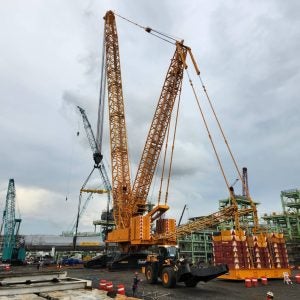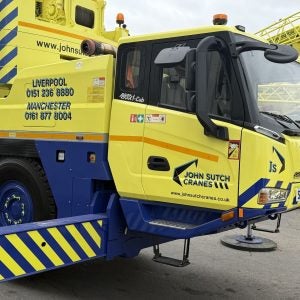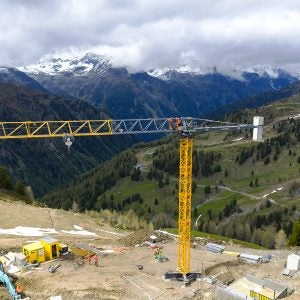
The VarioTray detachable ballast system was used on the crawler crane. By reducing the radius during the hoist from an initial 32m to 18m, the crane had to significantly reduce the ballast on the derrick boom. Instead of removing the ballast slabs with a set-up crane, as has been the normal time-consuming procedure in the past, the majority of the suspended ballast was simply unbolted and disconnected – taking a matter of minutes. Only the centre stack of the ballast pallet weighing a total of 340t was left as ballast on the derrick boom until the load was finally lowered into position.
The bridge was around 20t heavier than planned. Peter Drabsch, the team manager from crane contractor Maxikraft Kran- und Schwerlastlogistik and crane operator Ralf Ludwig tackled the situation quite calmly. They adjusted the derrick radius of the suspended ballast from 18 to 20m, which compensated for the additional weight without a problem. Together with the hook block, hoisting equipment and yoke, the Liebherr crawler crane had to handle a gross load of 249t for the installation of this steel bridge.
Dutch heavy haulage and transport logistics contractor Wagenborg-Nedlift was responsible for the bridge installation and had rented the crawler crane from Maxikraft. The Dutch were also responsible for transporting the arched bridge from the assembly site to the abutment on the bridge construction. A number of SPMTs were used for this purpose.
Wagenborg’s project manager Bart van den Belt was absolutely delighted by the benefits of the VarioTray system after the bridge had been hoisted into position: “An auxiliary crane would have taken ages to do the work. We saved a lot of time using VarioTray.”







